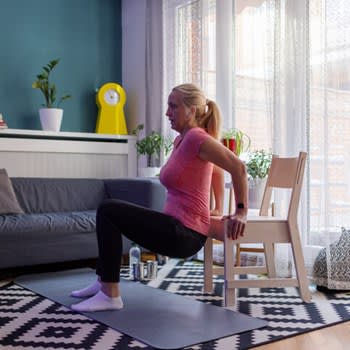Does Medicare Cover Compression Stockings?
- Does Medicare cover compression stockings? Millions of people use compression garments to control swelling and other issues. Find out if your Medicare plan can pay for compression socks.
Original Medicare does not pay for compression stockings, though some Medicare Advantage plans might. Because compression stockings are generally sold over the counter, rather than provided by approved medical equipment dispensaries or plan pharmacies, your traditional Medicare benefits may not help with the cost of buying them. Some privately issued Medicare Advantage plans, however, do include a provision to reimburse you for the cost of medically necessary items that Original Medicare doesn’t usually cover.

Learn More About Medicare
Join our email series to receive your free Medicare guide and the latest information about Medicare.
By clicking "Sign me up!" you are agreeing to receive emails from HelpAdvisor.com
Thanks for signing up!
Your free Medicare guide is on the way.
Make sure to check your spam folder if you don't see it.
What Are Compression Stockings Used For?
Compression stockings apply gentle continuous pressure to your lower legs. Doctors sometimes prescribe these garments to help keep swelling down in the lower extremities. Some people use compression stockings to help control varicose veins or edema, which is a swelling of the legs caused by fluid pressing on the skin and other tissues.
Will Medicare Cover Compression Stockings or Socks?
In most cases, Medicare does not cover compression stockings or socks. That includes for diabetics and those with heart conditions — even if the compression hose were ordered by a doctor.
However, if you have a Medicare Advantage plan, it may cover more than Original Medicare covers. If you have a Part C plan managed by a private insurer, check your benefits package or call customer support to find out if compression stockings are covered and when.
When Will Medicare Cover Compression Stockings?
Original Medicare only covers compression stockings for one condition: open venous stasis ulcers. If you have this diagnosis, Medicare will cover gradient compression stockings that meet the following requirements:
- They are worn below the knee (they aren't thigh-high or full compression hose)
- They provide compression between 30 mmHg and 50 mmHg
How Medicare Benefits Work
The vast majority of Medicare beneficiaries get their benefits in one of two ways, Original Medicare and Medicare Advantage. Original Medicare groups its coverage into three main parts, called Parts A, B and D. Medicare Part A pays for much of the cost of inpatient care in a hospital, while Part D is the prescription drug benefit. Durable medical supplies and other outpatient benefits are typically grouped together as Part B benefits.
Part B typically does not pay for items you can get over the counter, such as bandages, disinfectant, gloves and compression garments. There are exceptions to this rule, though it is best to speak with a knowledgeable Medicare representative for a definitive answer to what your benefits include. You may be able to get help paying for compression stockings through Part B if they are directly dispensed to you by your doctor, or if you have to buy them from a retailer that has been authorized to bill Medicare. However, Original Medicare benefits do not include stockings.
Medicare Advantage, or Part C, plans are offered by authorized private insurance companies and must meet federal guidelines for benefits and coverage minimums. All authorized Part C plans combine all of the benefits of Original Medicare Parts A and B and offer them for a single monthly premium.
Over-the-counter durable goods, such as compression stockings, are not automatically covered as part of your Medicare Advantage benefits, though some plans do offer to reimburse you for such purchases.
If your doctor recommends these leg garments to help with a medical condition, some Medicare Advantage plans allow you to buy them from any source you wish and submit an invoice for reimbursement of your costs. This is not a universal feature of Medicare Advantage plans, and so it's best to ask your plan representative about your specific coverage before buying compression stockings from a retailer.
How Much Do Compression Stockings Cost?
Compression stockings, which are sometimes called compression socks, range in price from as little as $10 a pair to more than $100. The price you pay for stockings depends on their design, what they’re used for, where you buy them and whether you’re buying a national leading brand or something less well known. Regardless of your insurance coverage, it's likely you will have to pay the entire cost of your compression stockings up front, just as you would with any other product offered over the counter. Some policies may reimburse you for some or all of this cost, but typically they require you to submit a receipt or other documentation of your purchase before you can be paid.





